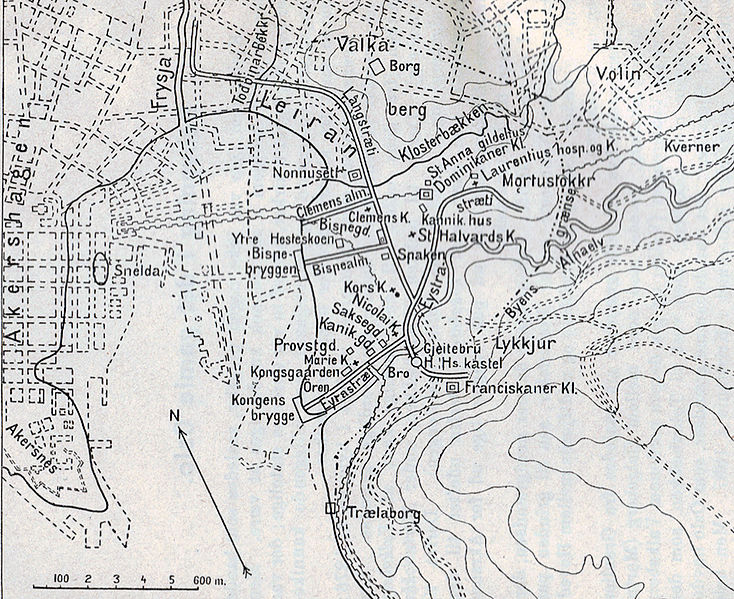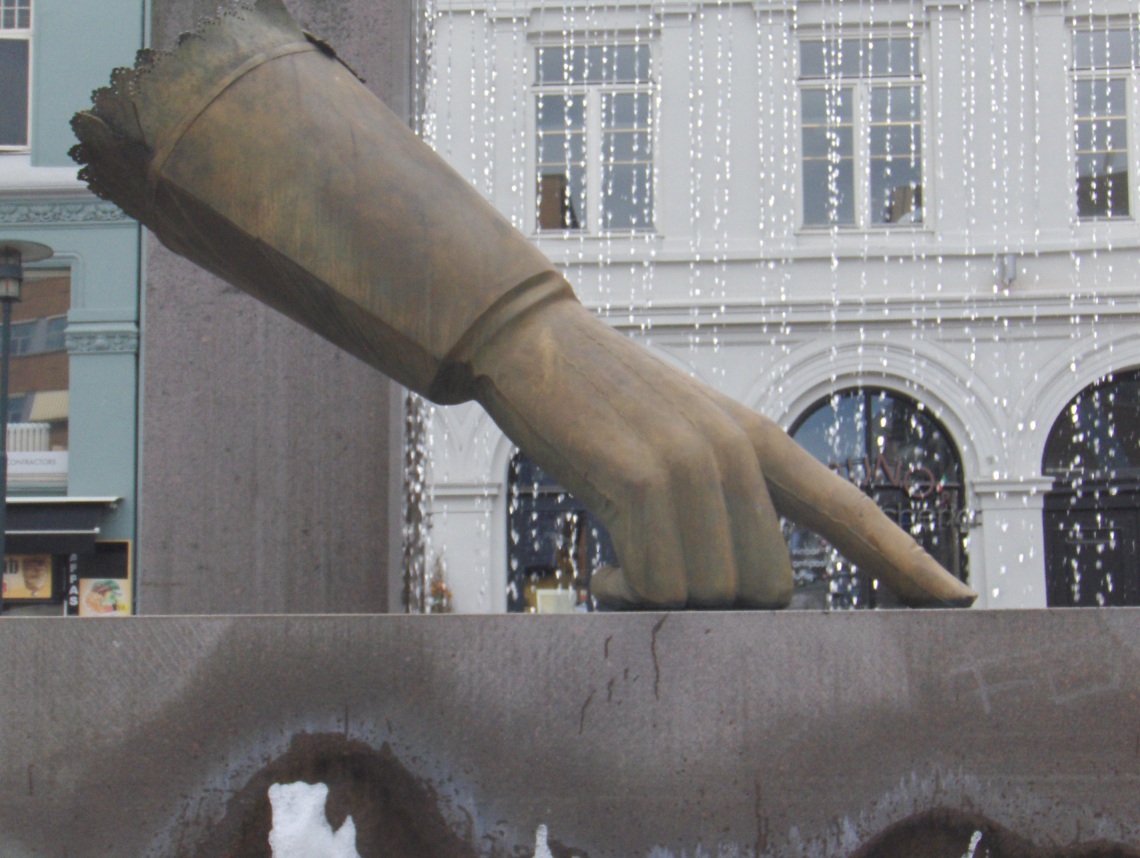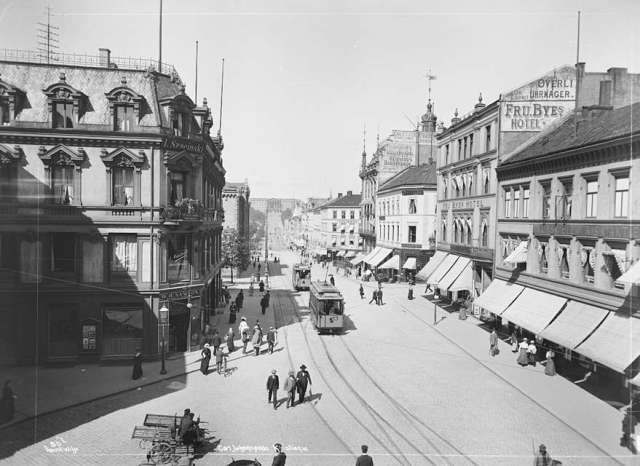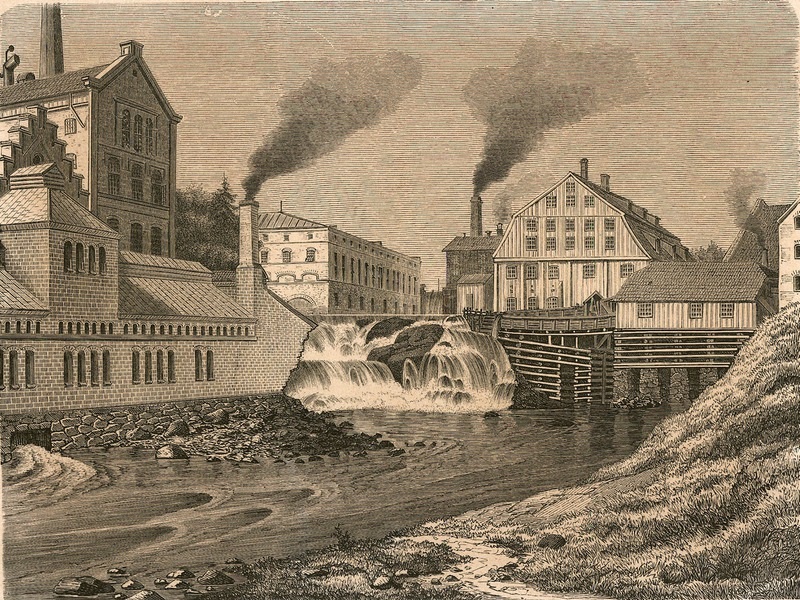History of Hammerfest
- 0 comments
- by Emma
The History of Hammerfest
The history of Hammerfest is incredibly interesting, and I always get excited explaining it to groups. Who would’ve thought that such a small town could have such a varied and complex history? Anyway, here’s the history of Hammerfest.
In this article...

Norway's Coastal Ferry
Hammerfest is a port of call of Norway’s coastal ferry. Find my guide for the coastal ferry by clicking the link below.
Ancient Times
Many gravesites dating back to the Stone Age can be found in the area around Hammerfest. In Leirbukt a boulder was found that had a 2,500-year-old rock carving representing a boat and three moose. Near the highway is a collection of stones called Stalloen that was a Sami sacrificial site in pre-Christian times. So people have lived here for hundreds of years, but Hammerfest didn’t gain prominence until it became an official market town.
Hammerfest Gets Market Status
From ancient times Hammerfest was known as a central fishing village, and it was also central to hunting in the Arctic. The first church was built in 1684, and at around that time, the population was 60. Hammerfest lost its trading right by King Frederick V of Denmark-Norway, who wanted all trade to come out of Bergen. Because of this, Russia began to ship grain to Hammerfest as part of the Pomor Trade.
In 1789 Hammerfest was given market town rights by royal decree of Christian VII of Denmark-Norway, who was trying to establish new market towns in the Arctic after the collapse of Bergen’s trading monopoly. This makes Hammerfest, together with Vardø, the oldest town in Northern Norway.
The reason Hammerfest was granted status is due to its strategic position – Hammerfest has long been an important way station for shipping, fishing and Arctic hunting.
Throughout the 19th century, Hammerfest grew as a major trading port thanks to the Russian trade. The ladies wore the finest Paris fashions, while the men learned how to hunt in the Arctic from the Russians. Polar sea explorations began in the late 18th century, and at the beginning of the 20th century Hammerfest was regarded as the ‘Polar Capital of Norway’. Several major powers set up consulates in Hammerfest, including Russia, England, Holland, France, Hamburg and the United States.
Napoleonic Wars
Hammerfest was not spared during the Napoleonic Wars. When Denmark-Norway chose the side of France, the UK saw Hammerfest as a target due to its status as one of the main centres of commerce and transportation in the Arctic. The town was attacked on 22 July 1809 – Hammerfest’s two-cannon batteries and the British warships with a total of 32 cannons made for a surprisingly intense battle that only ended when Hammerfest ran out of gunpowder. Most of the town was able to flee, but the British raided the area over eight days, including taking the church donation box and some of the church’s silver.
The Great Fire of 1890
Hammerfest was struck by a fire in 1890 which started at the bakery and wiped out almost half of the houses in town. After the fire, Hammerfest received donations and humanitarian assistance from across the world, with the biggest single donor being Kaiser Wilhelm II of Germany. The Kaiser had personally visited the town several times on his yacht and had great affection for the small northern settlement.
Electric Street Lights
In 1891, Hammerfest became the first urban settlement in Northern Europe to get electrical street lights. The invention was brought by two of the town’s merchants who had seen it demonstrated at a fair in Paris.




World War II
After their victory in the Norwegian Campaign, the Germans soon fortified Hammerfest and used it as a major base. The importance of Hammerfest to the Germans increased dramatically after they invaded the Soviet Union in 1941. The occupiers installed three coastal batteries in and around Hammerfest, and the main U-boat base for Finnmark was located here. It was central to the vessels attacking the Allied supply convoys to Russia.
Hammerfest was an important base during the Second World War. The Germans occupied the town and used it as a major base after invading the Soviet Union in 1941. The main German U-boat base in the county of Finnmark was in Hammerfest, and the garrison was protected by 4,000 mines and numerous anti-aircraft guns. The garrison in Hammerfest was also protected by around 4,000 mines and numerous anti-aircraft guns.
The first time Hammerfest was bombed by the Soviets was on 14 February 1944, doing little damage to the town. The Soviets bombed a second time on 29 August 1944, and this did significantly more damage to the buildings and infrastructure, and two local transport ships were sunk.

The population was forcibly evacuated by the Germans in the autumn of 1944 after the Soviet offensive was pushing into Norway. Hammerfest was then looted and burned to the ground by the Germans, and by 10 February 1945 the town was completely destroyed.
The only building remaining was the chapel. Mines and munitions left over from WWII are still being found and disposed of in the Hammerfest area.
The Museum of Reconstruction tells the story of World War II in Hammerfest.

Post-War Growth
Hammerfest saw massive growth in the post-war years, partly from people moving to the city after abandoning their smaller villages. The fishing industry also became important in Hammerfest.

Liked reading about the history of Hammerfest? Click here to read about what Hammerfest is like today.




Norway's Coastal Ferry
Hammerfest is a port of call of Norway’s coastal ferry. Find my guide for the coastal ferry by clicking the link below.





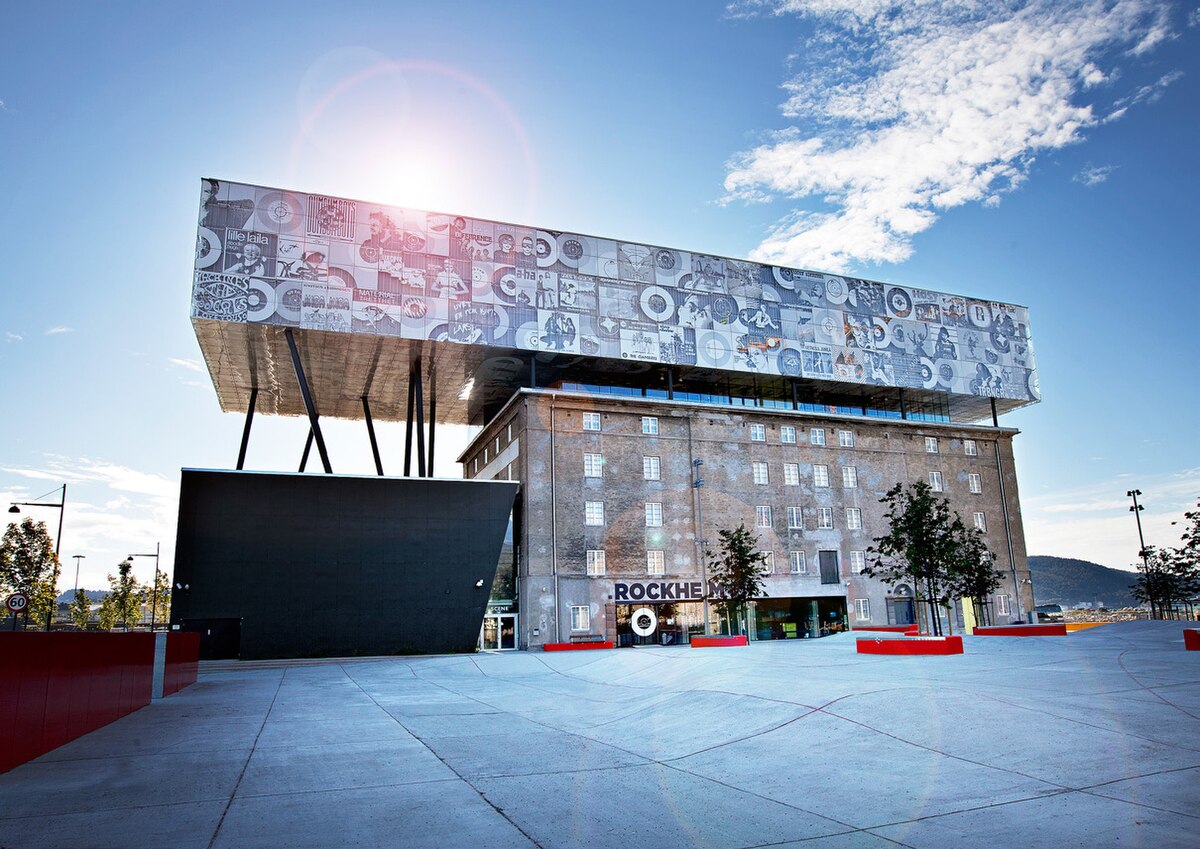
















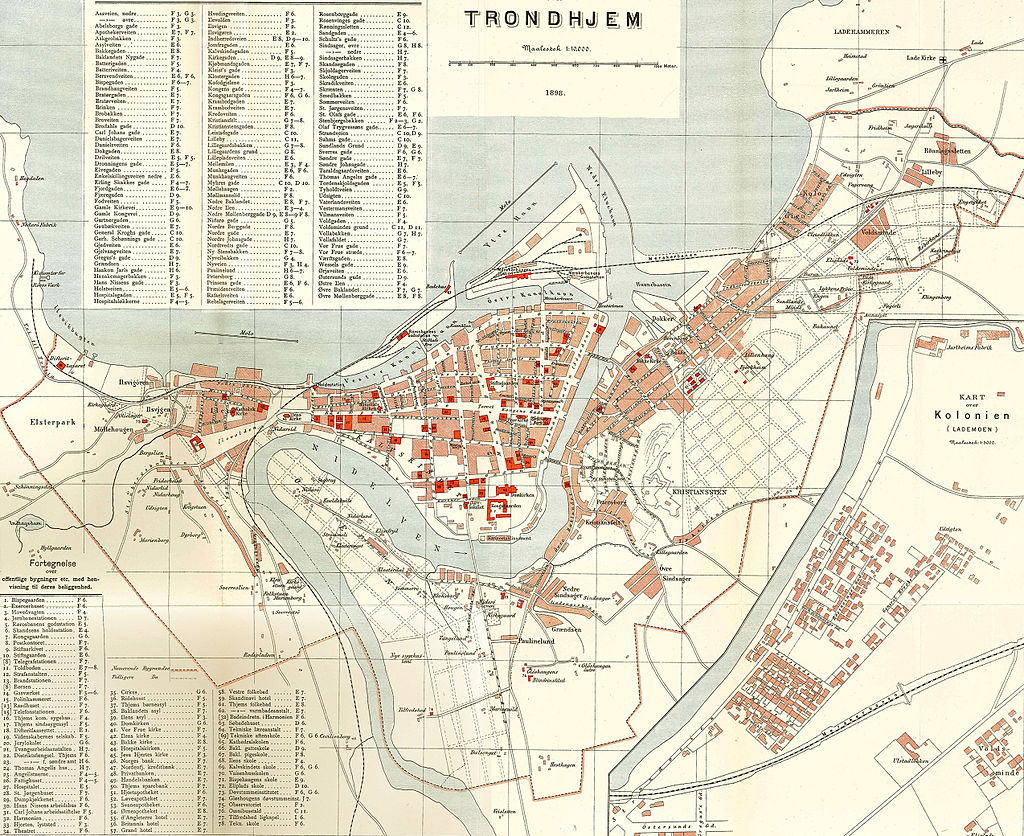



























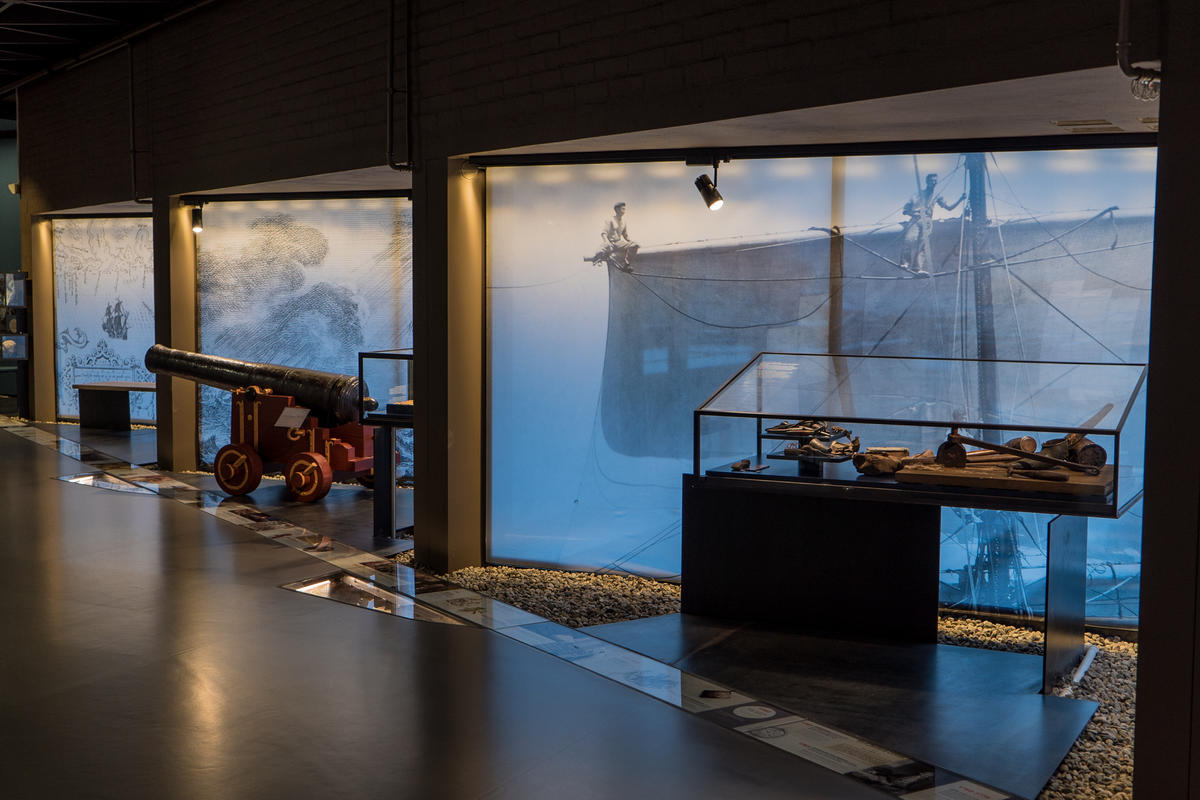



 The Oseberg Ship
The Oseberg Ship








